When Is The Best Time of Year To Visit Japan?
Japan is a country that offers breathtaking landscapes, rich history, unique cultural experiences, and a wide variety of activities year-round. However, deciding the best time of year to visit Japan depends on your travel preferences—whether you want to witness cherry blossoms, experience vibrant festivals, enjoy winter sports, or explore traditional temples in comfortable weather.
This comprehensive guide will help you navigate Japan’s seasonal highlights, weather patterns, and regional differences to determine the best time of year to visit Japan based on your interests.
🌸 Spring (March to May) – A Blossoming Experience
Why Spring Is Among the Best Time of Year To Visit Japan
Spring is arguably the most popular and picturesque time to visit Japan. It’s when the country awakens from winter, and cherry blossoms (Sakura) bloom across cities and countryside.
Highlights:
-
Cherry Blossom Viewing (Hanami): Famous in Tokyo, Kyoto, Osaka, and Hiroshima.
-
Pleasant Weather: Mild temperatures between 10°C to 20°C.
-
Festivals: Hanami festivals, cultural events, and flower exhibitions.
Recommended Locations:
-
Tokyo: Ueno Park, Shinjuku Gyoen.
-
Kyoto: Maruyama Park, Philosopher’s Path.
-
Osaka: Osaka Castle Park.
Best Time of Year To Visit Japan Tip: Late March to early April is prime for cherry blossom viewing, but exact timing depends on the region and yearly weather patterns.
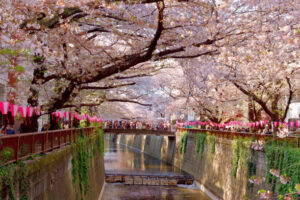
☀️ Summer (June to August) – Festivals and Adventure
Why Summer Is an Exciting Time of Year To Visit Japan
Summer is vibrant with festivals, fireworks, and mountain adventures, although it can be hot and humid.
Highlights:
-
Gion Matsuri (Kyoto) and Awa Odori (Tokushima): Colorful and lively festivals.
-
Beaches in Okinawa and Shonan: Great for sunbathing and swimming.
-
Hiking in the Japanese Alps: Mount Fuji climbing season opens in July and August.
Weather Conditions:
-
Hot and humid, averaging 25°C to 35°C.
-
June is the rainy season (Tsuyu), so it’s better to avoid early summer.
Best Time of Year To Visit Japan Tip: Mid to late July offers the best festival atmosphere, while August is perfect for beach activities and mountain treks.
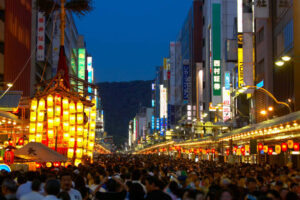
🍁 Autumn (September to November) – A Colorful Spectacle
Why Autumn Is a Top Time of Year To Visit Japan
Autumn is one of the most beautiful times to experience the natural wonders of Japan, as leaves change to vibrant reds, oranges, and yellows.
Highlights:
-
Koyo (Autumn Foliage): Stunning views in Kyoto, Nikko, and Nara.
-
Mild Weather: Comfortable temperatures between 15°C to 25°C.
-
Cultural Events: Local harvest festivals and traditional ceremonies.
Popular Spots for Autumn Colors:
-
Kyoto: Tofukuji Temple, Kiyomizu-dera.
-
Nikko: Lake Chuzenji and Nikko National Park.
-
Hakone: Known for scenic autumn drives.
Best Time of Year To Visit Japan Tip: Mid-November is usually the peak for foliage in most regions.
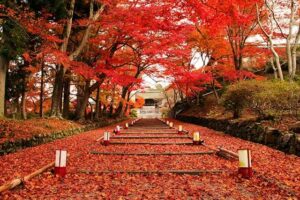
❄️ Winter (December to February) – Snow and Serenity
Why Winter Is A Magical Time of Year To Visit Japan
Winter offers a quieter, serene experience and is ideal for winter sports, traditional hot springs (Onsen), and cultural events like New Year celebrations.
Highlights:
-
Sapporo Snow Festival (Hokkaido): Ice sculptures and snow art.
-
Ski Resorts: Niseko, Hakuba, and Nozawa Onsen offer world-class skiing.
-
Onsen Experience: Relax in hot springs amid snowy landscapes.
Weather Conditions:
-
Cold, ranging from -5°C to 10°C.
-
Clear skies and dry air are common, making it ideal for sightseeing.
Best Time of Year To Visit Japan Tip: December and February are peak times for winter festivals and skiing.
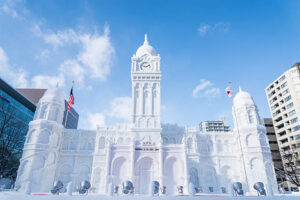
🎎 Regional Considerations: Best Time of Year To Visit Japan Varies
Northern Japan (Hokkaido)
-
Best Time: Summer for hiking, winter for snow festivals and skiing.
-
Highlights: Sapporo Snow Festival, Furano’s flower fields in summer.
Central Japan (Tokyo, Kyoto, Osaka)
-
Best Time: Spring and autumn for weather and beauty.
-
Highlights: Cherry blossoms, autumn foliage, cultural festivals.
Southern Japan (Okinawa)
-
Best Time: April to June and September to October.
-
Highlights: Warm climate, beach activities, coral diving.
🌟 Unique Events Defining The Best Time of Year To Visit Japan
1. Cherry Blossom Festivals (Late March – Early April)
A global attraction, drawing millions for the transient bloom period.
2. Sapporo Snow Festival (February)
Showcases enormous snow sculptures, attracting winter travelers.
3. Gion Matsuri (July)
A month-long festival of floats and cultural events.
4. Obon Festival (Mid-August)
Honors ancestral spirits with dances (Bon Odori) and ceremonies.
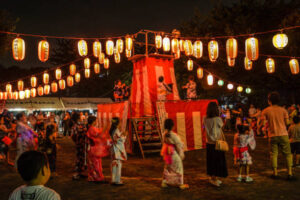
Experience Seasonal Foods Alongside Your Visit
Japan’s food culture reflects the seasons. During your trip, experience:
-
Spring: Sakura-themed sweets and dishes.
-
Summer: Cold noodles and shaved ice (Kakigori).
-
Autumn: Matsutake mushrooms, chestnuts, and sweet potatoes.
-
Winter: Hot pots (Nabe) and warm ramen varieties.
Comparative Table: Seasons at a Glance
| Season | Weather | Highlights | Best Regions |
|---|---|---|---|
| Spring | Mild (10–20°C) | Cherry blossoms, festivals | Tokyo, Kyoto, Osaka |
| Summer | Hot & Humid (25–35°C) | Beach, fireworks, hiking | Okinawa, Hokkaido, Alps |
| Autumn | Cool (15–25°C) | Autumn foliage, harvest festivals | Kyoto, Nikko, Hakone |
| Winter | Cold (-5–10°C) | Snow sports, Onsen, snow festivals | Hokkaido, Nagano, Niigata |
Practical Travel Tips for The Best Time of Year To Visit Japan
-
Booking: High season (spring and autumn) requires early accommodation booking.
-
Clothing: Pack layers—spring and autumn can be cool, summer can be hot, winter can be freezing.
-
Peak Crowds: Golden Week (late April – early May) sees huge crowds and higher prices.
-
Transport: Use Japan Rail Pass for efficient travel.
Final Thoughts – Discover Your Best Time of Year To Visit Japan
Choosing the best time of year to visit Japan largely depends on your interests. Whether you’re chasing cherry blossoms, immersing in traditional festivals, enjoying winter sports, or exploring cultural sites in serene weather, Japan has something for every traveler year-round.
Spring and autumn are generally regarded as the most comfortable and picturesque seasons, but summer festivals and winter snow activities also offer unforgettable experiences.
Plan according to what fascinates you most—each season brings its own charm, flavors, and cultural highlights, making Japan an ever-enchanting destination.
Follow Us: Instagram